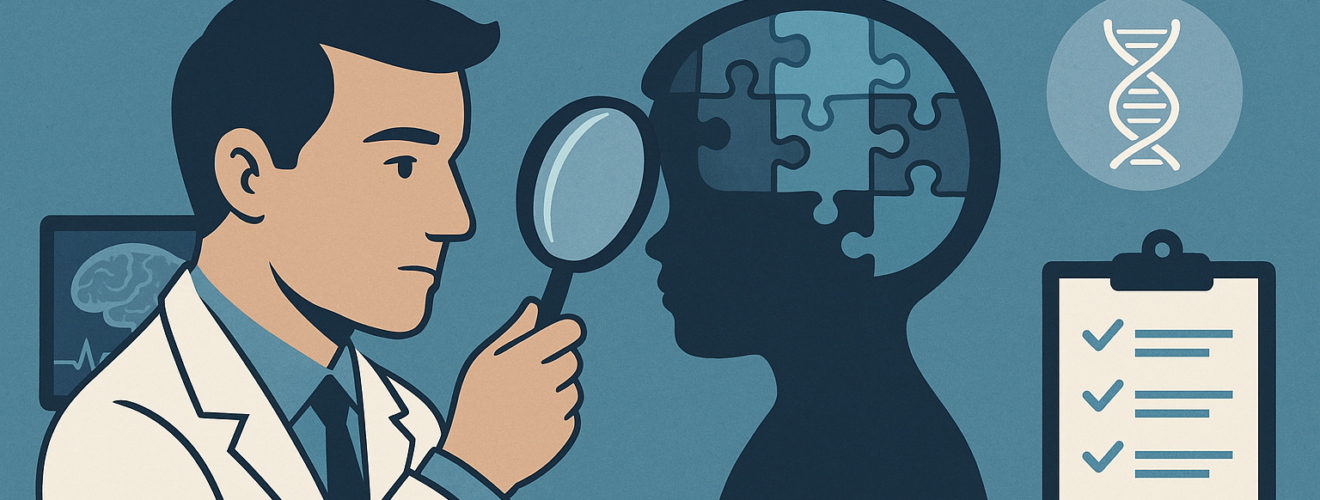The Quest for Objective Autism Biomarkers: Moving Beyond Behavioral Diagnosis

For decades, the process for diagnosing Autism Spectrum Disorder (ASD) has primarily relied on observing behavior and reviewing developmental history. While crucial, standard assessment methods like the ADOS-2 explained and the ADI-R interview can be subjective. They require specialized training. These methods may identify autism later than ideal. Cultural factors can also influence them. This drives the urgent search for objective autism biomarkers. These are measurable biological indicators that could lead to earlier and more definitive autism detection. They help differentiate autism from other neurodevelopmental conditions. They could potentially even identify different autism levels or subtypes. As of March 2025, while no single biomarker test is ready for widespread clinical use, research is rapidly advancing. This article explores the most promising avenues in the quest for reliable autism biomarkers.
Why Do We Need Objective Biomarkers for Autism Diagnosis?
Current behavioral assessments, while forming the core of the autism diagnosis journey, have limitations:
- Late Diagnosis: Often, clear behavioral signs of autism emerge later, delaying access to vital early intervention strategies. Early autism detection is key for maximizing support benefits.
- Subjectivity: Interpretation during assessment can vary between clinicians.
- Co-occurring Conditions: Overlapping symptoms with conditions like autism and ADHD or autism and anxiety can complicate diagnosis. Differentiating autism objectively is a major goal.
- Access & Bias: Requires highly trained professionals, and assessments may need adaptations for different cultural factors in autism presentation.
- Understanding Subtypes: Autism is a spectrum. Biomarkers might help understand biological differences underlying variations. You can learn more about this in our guide to understanding autism profiles.
Objective ASD biomarkers promise a more biologically grounded approach to complement behavioral observations.
Promising Avenues in Autism Biomarker Research
Scientists are exploring various biological signals. The most likely future involves a panel of autism biomarkers rather than a single test. Find out more on our latest autism research updates page.
Genetic and Epigenetic Markers
- What: Analyzing DNA for specific gene variations associated with increased autism likelihood. Read more about the role of genetics in autism. Epigenetics looks at how gene expression is influenced by environmental factors.
- Potential: Can indicate predisposition. Research is identifying numerous genetic markers for autism.
- Limitations: No single gene causes autism; it involves complex gene-environment interactions. Genetic testing alone isn’t diagnostic but can contribute to risk assessment.
- Keywords: autism genetic markers, epigenetics autism, autism risk genes
Brain Imaging and Activity (EEG, fMRI, MRI)
- What: Using technologies like Electroencephalography (EEG), functional Magnetic Resonance Imaging (fMRI), and structural MRI to understand brain differences in autism.
- Potential: Studies show differences in brain structure, connectivity, and activity patterns (e.g., responses to sensory stimuli) in autistic individuals, even in infancy. Brain imaging autism research is a major focus.
- Limitations: Requires specialized equipment, expensive, sensitive to movement. Patterns are complex. Standardization is needed.
- Keywords: autism brain imaging, EEG autism diagnosis, fMRI autism studies, brain structure autism
Eye-Tracking Technology
- What: Measuring gaze patterns – where and how long someone looks at visual stimuli. Learn about its application in eye-tracking autism research.
- Potential: Autistic infants and toddlers often show distinct visual attention patterns. This is a non-invasive autism test approach being heavily researched for early autism detection.
- Limitations: While promising, patterns can vary. Needs more large-scale validation.
- Keywords: eye tracking autism diagnosis, early autism detection eye tracking, visual attention autism
Metabolic and Protein Markers
- What: Searching for specific proteins or metabolites in biological fluids that differ in autistic individuals.
- Potential: An accessible autism blood test or urine test would be revolutionary. Some studies show differences in certain metabolic pathways.
- Limitations: This area is less developed. Findings require replication. High variability exists.
- Keywords: autism blood test research, metabolic markers autism, protein biomarkers ASD
Other Potential Biomarkers
Research also explores auditory processing differences, the autism-gut microbiome connection, and specific motor pattern differences as potential objective indicators.
The Goal: An Integrated, Multi-Marker Approach
The future of objective autism diagnosis likely involves combining multiple biomarker types with expert clinical observation. An integrated autism assessment might use early screening methods, genetic risk assessment, detailed analysis (like EEG), alongside developmental history.
Challenges and The Road Ahead
Developing clinically useful autism diagnosis biomarkers faces hurdles:
- Heterogeneity: Autism’s diversity makes finding universal markers difficult.
- Validation: Rigorous testing is essential.
- Accessibility & Cost: New technologies must become practical.
- Ethical Considerations: Avoiding misuse and combating autism stigma.
Translating findings from autism biomarker research into standard tools takes time.
Conclusion: A Hopeful Future for Autism Diagnosis
The search for reliable autism biomarkers is a critical frontier. While behavioral observation remains central today (March 2025), advancements offer hope. Objective biomarkers could allow earlier autism detection. They could lead to more personalized autism support strategies. These biomarkers improve diagnostic accuracy and ultimately benefit autistic individuals and their families. Staying informed about ongoing autism research is key as we move forward.

